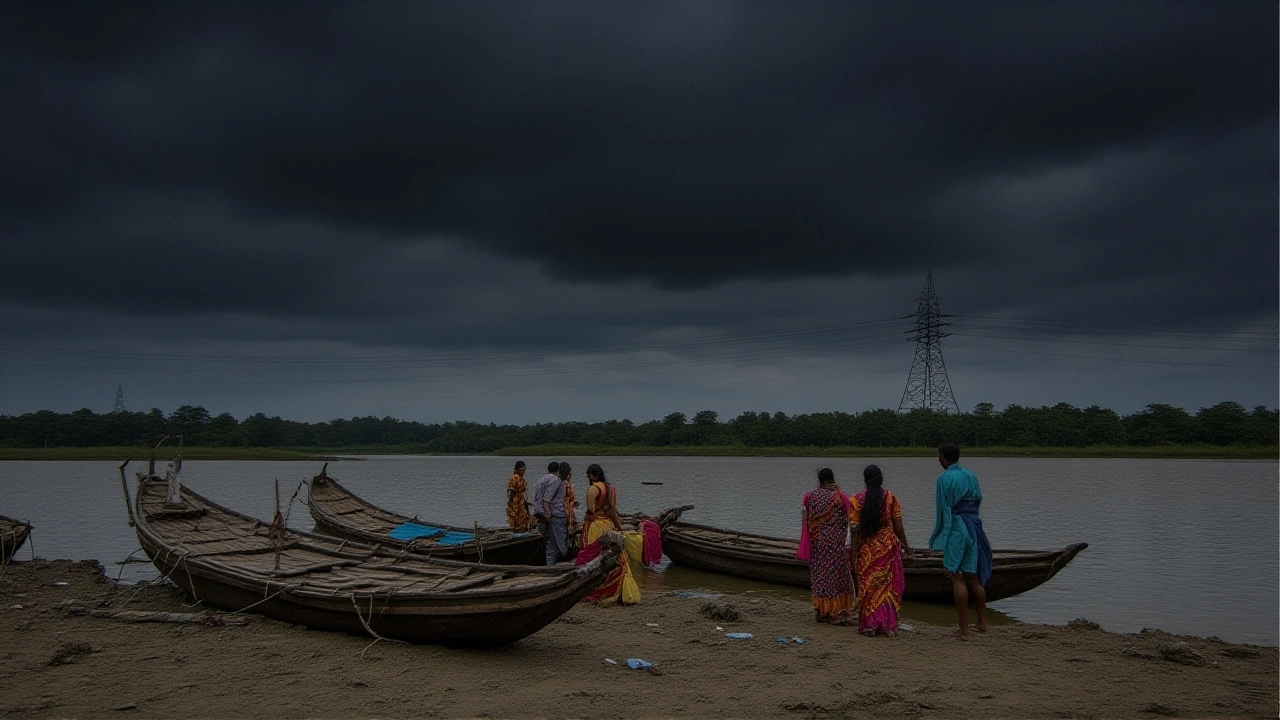When India Meteorological Department Ranchi Weather Center released a Yellow Alert for JharkhandJharkhand, India on Monday, the state braced for scattered heavy rains, thunderstorms and lightning strikes across eleven districts, including Ranchi, Dhanbad and Bokaro. The warning matters because it directly affects millions of residents, farmers ready for harvest and anyone traveling on the region’s winding roads.
Background: A Shifting Monsoon Across Eastern India
Jharkhand’s monsoon season traditionally peaks in July and August, but lingering moisture from the Bay of Bengal has kept the eastern plateau unsettled well into October. Over the past 48 hours, satellite‑derived precipitation estimates showed average rainfall of 12‑18 mm across the state, with pockets in the south‑west recording up to 45 mm. The IMD’s AI‑enhanced forecasting models flagged a rapid intensification of low‑pressure systems on the evening of October 5, prompting meteorologists to upgrade the warning level.
"The atmospheric dynamics we’re seeing are unusual for this time of year," explained Dr. Rajesh Kumar, senior meteorologist at the Ranchi Weather Center. "If the trends hold, we could see localized downpours exceeding 70 mm within a few hours, especially over the Chotanagpur plateau."
Details of the Yellow Alert
The yellow alert covers eleven districts: Ranchi, Dhanbad, Bokaro, Khunti, Jamshedpur, Giridih, Deoghar, Chaibasa, Dumka, Hazaribagh and Palamu. "Yellow" signals that heavy rainfall is probable, though not yet at the catastrophic levels of an orange or red alert. Nonetheless, the IMD warned of strong gusts up to 45 km/h, frequent lightning and potential flash flooding in low‑lying areas.
- Expected rainfall intensity: light to moderate (5‑15 mm/h) in most districts; heavy (20‑45 mm/h) in Ranchi, Dhanbad and Bokaro.
- Wind speeds: 30‑45 km/h, with occasional gusts over 50 km/h near hill ranges.
- Lightning activity: heightened risk from 14:00 IST onward.
These figures stem from a blend of ground‑based radar data and the IMD’s now‑casting AI framework, which updates every 15 minutes to capture fast‑moving cells.
Safety Guidelines for Residents
Local authorities have issued a concise checklist to keep citizens safe during the alert period. The advice echoes longstanding disaster‑management protocols but adds a few weather‑specific tweaks.
- Stay indoors once rain begins; avoid walking on wet roads where visibility drops.
- Do not seek shelter under trees, utility poles or temporary structures—lightning often strikes the tallest object nearby.
- If you hear thunder, move to a concrete‑roofed building or a well‑built vehicle. Avoid metal‑capped roofs that can conduct electricity.
- Turn off electrical appliances that are unplugged to prevent surges if a line is struck.
- Keep a flashlight, battery‑powered radio and emergency supplies handy; power outages are possible.
For those caught in fields, the IMD urges immediate retreat to the nearest sturdy shelter. Farmers with livestock should herd animals to higher ground or sturdy barns.

Impact on Agriculture: A Delicate Balance
Jharkhand’s agrarian economy means the yellow alert hits a vulnerable sector. The state’s main crops—rice, maize and pulses—are at a critical growth stage. Heavy downpours can damage tender shoots, while prolonged moisture may foster fungal diseases.
The Department of Agriculture, Jharkhand, advised farmers to delay irrigation in water‑logged fields and to use protective covers for seedlings. "We’re urging a pause on field activity until the storm subsides," said Ms. Anita Singh, private secretary to the state’s agriculture minister.
Pre‑emptive measures include applying fungicides where humidity spikes above 80 % and securing tools that could be swept away. In regions like Bokaro, where steel plants sit adjacent to farmlands, managers have also issued internal alerts to protect infrastructure.
Forecast and Future Outlook
Looking ahead, the IMD’s medium‑range model predicts a gradual tapering of rainfall by October 9, though isolated thunderstorms may linger into the weekend. Temperature swings will narrow, with daytime highs sticking around 27 °C and nighttime lows dipping to 18 °C.
"If the moisture feed from the Bay of Bengal weakens as expected, the rest of the week should see clear skies," Dr. Kumar added. "Citizens should, however, stay tuned to updates—weather systems can be fickle in this region."
Authorities will reassess the alert level each morning. An upgrade to orange would signal imminent flooding, while a downgrade to green would mean the threat has largely passed.

Key Facts
- Alert issued: 06 Oct 2025, 08:00 IST
- Entity issuing alert: India Meteorological Department (Ranchi Weather Center)
- Districts affected: 11 (Ranchi, Dhanbad, Bokaro, Khunti, Jamshedpur, Giridih, Deoghar, Chaibasa, Dumka, Hazaribagh, Palamu)
- Expected rainfall: up to 45 mm/h in hotspots
- Safety priority: avoid open spaces, seek concrete shelter
Frequently Asked Questions
How will the yellow alert affect daily commuting in Jharkhand?
Roads in Ranchi, Dhanbad and Bokaro are expected to become slippery, and visibility may drop during heavy downpours. Public transport operators have announced possible delays, especially for bus routes that cross low‑lying bridges. Commuters are advised to plan extra travel time, use high‑beam headlights, and avoid unnecessary trips until the rain eases.
What specific measures should farmers take to protect crops?
The state’s agriculture department recommends halting irrigation in water‑logged fields, covering tender seedlings with waterproof tarps, and applying anti‑fungal sprays where humidity exceeds 80 %. Livestock should be moved to elevated pens, and equipment should be secured to prevent loss during sudden gusts.
Can the yellow alert turn into a more severe warning?
Yes. If rainfall intensifies above 50 mm/h or flash flooding is reported, the IMD could upgrade the alert to orange or red. Residents should monitor local news and the IMD’s mobile alerts for any changes.
What should people do if they are caught outdoors during a thunderstorm?
Seek immediate shelter in a concrete‑roofed building or a sturdy vehicle. Avoid standing under isolated trees, near metal poles or in open fields. If no shelter is available, crouch low with feet together and keep your hands away from your head.
When is the yellow alert expected to be lifted?
The IMD forecasts a gradual decrease in precipitation by October 9, but officials will reassess each morning. A formal lift notice will be issued once rain intensity falls below 5 mm/h across the monitored districts.
